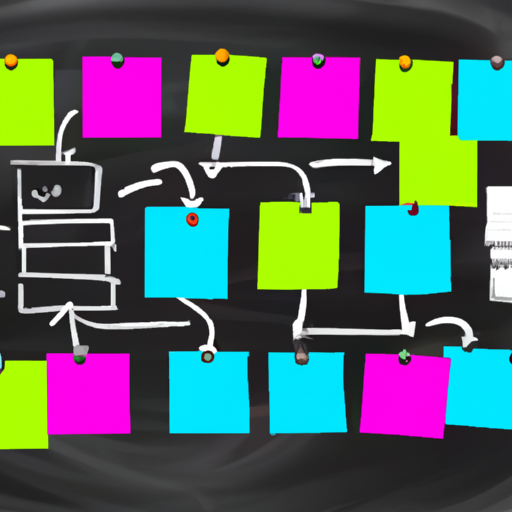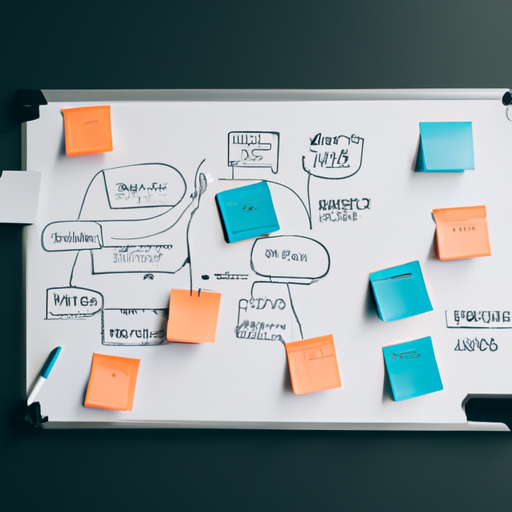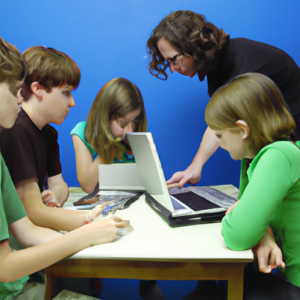In today’s rapidly changing educational landscape, finding effective strategies to address the diverse challenges faced by educators is crucial. One such strategy gaining traction is the adaptation of Scrum principles for the educational environment. By leveraging the iterative and collaborative nature of Scrum, educational institutions can tackle issues like inefficiency in delivery, student engagement, real-world relevance, cross-functional collaboration, personalization of learning, feedback loops, and preparation for modern workplaces. In this article, we explore how Scrum principles can be tailored to meet the needs of the educational sector, ultimately improving the educational experience for both students and educators.
Inefficiency in Delivery
Inefficiency in delivery is a common challenge in traditional educational systems. These systems often follow a rigid structure, where curricula are determined in advance and changes take time to implement. As a result, it can be difficult for educational institutions to quickly respond to changes in societal or industry needs. This is where the principles of Scrum can be adapted to improve the efficiency of delivery in the educational environment.
Scrum is a framework commonly used in software development, but its principles can be applied to education as well. One of the key principles of Scrum is its iterative and incremental approach to project management. In the context of education, this means breaking down the curriculum into smaller, more manageable units that can be delivered in a shorter period of time. This allows for faster iteration and responsiveness to changes.
By adopting Scrum in the educational environment, teachers and administrators can create a more flexible and adaptable system. They can continuously evaluate and adjust the curriculum based on new information, feedback, and emerging trends. This ensures that students are learning the most up-to-date and relevant information, preparing them for the rapidly changing world they will enter after graduation.
Student Engagement
Student engagement is a crucial factor in the success of any educational program. When students are actively engaged in their learning, they are more likely to be motivated, participate, and achieve better outcomes. However, traditional educational systems often struggle to maintain consistent student engagement.
Scrum provides a collaborative and hands-on approach to learning that can help increase student engagement. In Scrum, students work in teams to complete projects or solve real-world problems. This encourages students to take ownership of their learning, collaborate with their peers, and actively participate in the learning process.
The use of Scrum also provides students with a sense of purpose and autonomy. They have a clear understanding of the goals and objectives of the project, and they have the opportunity to make decisions and contribute to the project’s success. This sense of ownership and autonomy can significantly improve student motivation and engagement.
Furthermore, Scrum’s emphasis on regular communication and feedback fosters a supportive learning environment. Students have the opportunity to share their ideas and perspectives, receive constructive feedback from their peers and teachers, and reflect on their own learning and growth. This constant interaction and feedback help students stay engaged and continuously improve their skills.
Real-world Relevance
One of the criticisms often leveled against traditional education is the lack of real-world relevance in the curriculum. Students often struggle to see the connection between what they are learning in the classroom and how it applies to their future careers or daily lives. This is where the principles of Scrum can be invaluable in creating a more relevant and meaningful educational experience.
Scrum is a project-based framework that encourages students to work on real-world challenges and problems. Instead of focusing solely on theoretical knowledge, students have the opportunity to apply what they have learned in a practical context. This bridges the gap between theory and practice, allowing students to see the direct relevance of their education to the real world.
By working on real-world projects, students also develop a range of transferable skills that are highly valued in the workplace. These skills include problem-solving, critical thinking, collaboration, communication, and adaptability. By gaining experience in a project-based environment, students are better prepared to meet the demands of the modern workplace.
Furthermore, the use of Scrum in education also facilitates connections with industry professionals and organizations. Students can engage in partnerships or internships with local businesses, allowing them to gain firsthand experience in their chosen field. This exposure to the real world not only enhances the relevance of their education but also provides valuable networking opportunities and potential career pathways.
Cross-functional Collaboration
Cross-functional collaboration is becoming increasingly important in today’s interconnected and complex world. Many modern problems require interdisciplinary approaches, where individuals from different domains come together to solve complex challenges. However, traditional educational systems often operate within silos, with students focusing solely on their specific subject areas.
Scrum offers a solution to this challenge by encouraging teamwork across different domains. In a Scrum-based education system, students from different disciplines can collaborate on projects or solve problems together. This cross-functional collaboration allows students to gain a broader perspective, learn from each other’s expertise, and develop the necessary skills to work effectively in multidisciplinary teams.
In addition, the cross-functional nature of Scrum promotes a more holistic understanding of complex issues. Students are exposed to different viewpoints, approaches, and areas of expertise, which stimulates critical thinking and creativity. They learn to appreciate the value of diverse perspectives and develop the ability to integrate different ideas and knowledge to find innovative solutions.
The collaboration fostered by Scrum also mirrors real-world work environments, where individuals from different backgrounds often come together to tackle complex problems. By experiencing cross-functional collaboration in an educational setting, students are better prepared for the dynamics and challenges of the modern workplace.

Personalization of Learning
Every student has unique strengths, weaknesses, and learning styles. Recognizing and accommodating these individual differences is crucial for providing an effective and personalized learning experience. However, traditional educational systems often struggle to tailor education to individual student needs.
Scrum’s iterative nature provides a solution to this challenge. By breaking down the curriculum into smaller units and delivering them in short cycles, teachers and administrators can more easily adapt the learning experience to individual student needs. Students can progress at their own pace, spending more time on topics they find challenging and moving quickly through material they grasp easily.
Moreover, Scrum encourages regular reflection and feedback through structures like retrospectives. These opportunities for self-assessment and feedback enable students to identify their strengths, weaknesses, and areas for improvement. Teachers can also provide targeted feedback and guidance, helping students develop the necessary skills and knowledge at their own pace.
By personalizing the learning experience, educators can better meet the needs of individual students and ensure that every student has the opportunity to reach their full potential. This approach also fosters a sense of ownership and responsibility for their own learning, enhancing student engagement and motivation.
Feedback Loops
Traditional educational methods often lack continuous feedback loops, where students have the opportunity to reflect on their learning, receive feedback, and make improvements. This can hinder student growth and development, as well as limit the effectiveness of instructional strategies. Scrum offers structures that foster regular reflection and feedback, enhancing the learning experience.
One of the key elements of Scrum is the retrospective, where the project team reflects on what went well, what could be improved, and what actions should be taken in the future. In an educational context, retrospectives provide students with the opportunity to reflect on their learning progress, identify areas for improvement, and set goals for the future.
By regularly engaging in retrospectives, students develop metacognitive skills – the ability to think about their thinking – which is crucial for effective learning. They learn to analyze their strengths and weaknesses, set realistic goals, and develop strategies to improve their learning outcomes. This continuous feedback loop promotes student growth and empowers them to take ownership of their own learning.
Furthermore, Scrum also encourages regular communication and collaboration among students and teachers. This ongoing interaction provides additional opportunities for feedback and support. Students can seek clarification, ask questions, and receive guidance, ensuring that they are consistently supported throughout their educational journey.
By incorporating feedback loops into the educational environment, educators can create a culture of continuous improvement, where students are actively engaged in their own learning and consistently striving for growth and development.
Preparation for Modern Workplaces
As many industries adopt agile methodologies, introducing Scrum in schools can better prepare students for the dynamics of the modern workplace. Traditional educational systems often fail to equip students with the skills and mindset needed to thrive in today’s rapidly changing and collaborative work environments.
Scrum’s emphasis on teamwork, collaboration, and communication mirrors the requirements of modern workplaces. By working in Scrum-based projects, students develop the ability to work effectively in teams, coordinate tasks, and communicate their ideas and progress. These skills are essential for success in collaborative work environments, where individuals from different disciplines and backgrounds come together to solve complex problems.
Moreover, Scrum’s iterative and incremental approach to project management cultivates adaptability and flexibility – qualities highly valued in the modern workplace. Students learn to embrace change, quickly respond to new information and feedback, and continuously improve their work. This agile mindset allows them to navigate the uncertainties and challenges of the modern business world.
Furthermore, the personalization of learning facilitated by Scrum ensures that students develop the necessary skills and knowledge for their chosen field. By tailoring the curriculum to individual student needs and allowing them to focus on areas of interest and strength, students can develop a deep understanding of their chosen discipline. This specialized knowledge, combined with the skills acquired through Scrum projects, will enable students to excel in their future careers.
By incorporating Scrum principles into the educational environment, schools and colleges can better prepare students for the demands and realities of the modern workplace, equipping them with the necessary skills, mindset, and adaptability to succeed in their chosen fields.




